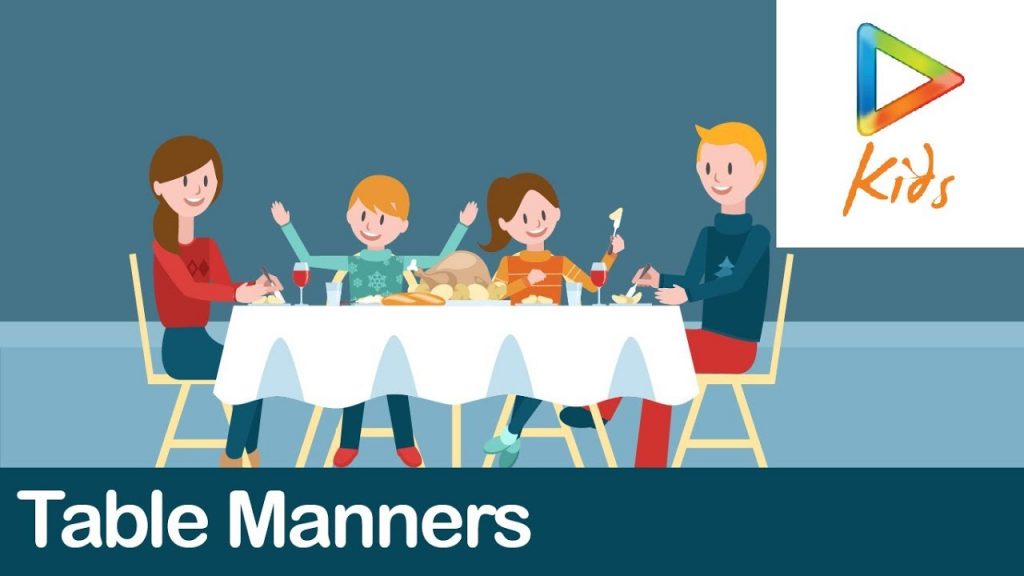Essential rules for polite eating:
Do
- Go to the loo beforehand so that you won’t interrupt the meal
- Wash your hands
- Use cutlery unless other people are using their fingers
- Pick up food which you have dropped on the floor and put it on the edge of your plate, on the table or in the bin – don’t eat it.
Don’t
- Grab food for your plate – use serving utensils if provided, but don’t use them to eat with
- Pile food too high on your plate in case there isn’t enough to go round and in case you can’t eat it
- Eat with your mouth open
- Steal food from other people’s plates or eat directly from a serving dish
- Use your own cutlery to take food from a serving dish
- Put food back on a serving plate once you’ve fingered it or if it has been on your plate
- Eat or drink noisily
- Whisper at the table – other people will think you are talking about them
- Talk with your mouth full or talk about toilet or vomiting issues
- Break wind or belch. Environment-dependent rules
In school you can eat with your elbows on the table and talk while eating. At a friend’s house, you should wait for permission before you start eating -and before you leave the table. Wait to be invited to have second helpings, and thank the person who cooked the meal.
At a restaurant, open the napkin and place it on your lap; use it to wipe your mouth or fingers but never for blowing your nose. Start to eat when everyone’s meal arrives, and at the end of the meal thank the person paying. Don’t leave the table until everyone is ready to go.
Discuss table manners to produce a list of dos and don’ts.
Discuss the differences in expectations when children eat in school, at a friend’s house and in a restaurant, and when eating with different people (These might be dependent on culture or status or vary according to how well they know the person.)
Activity
Give the children clean sets of plastic cutlery and plates. Ask them to position a knife, fork, soup spoon and dessertspoon around their plate. (Dessertspoons go above the plate with the handle pointing towards their right hand – assuming right-handedness. Soup spoons rest to the right of the knife.) Then ask these questions:
– How would you eat soup? (Don’t slurp, tilt the bowl and spoon away from you.)
– Can you use the knife and fork together to cut imaginary food?
– Show how you would transport solid food to your mouth. (It is rude to bow your head low over the plate; the cutlery – fork or spoon – should be brought up to your mouth with your head still. The knife is never used to bring food to your mouth and should never be put in your mouth.)
– Where should your knife and fork go when you have finished your meal? (They should be placed neatly together on the plate – at the six o’clock position or slightly to either side of this.)
Discuss cultural differences. (Usually, Muslims and Hindus eat with their right hand – their left hand is ‘unclean’. Belching while at the table is considered complimentary by people in Korea and in other parts of South East Asia. In some parts of South East Asia, Israel and North Africa it is rude to empty your plate completely as it suggests you have not had enough to eat.)


